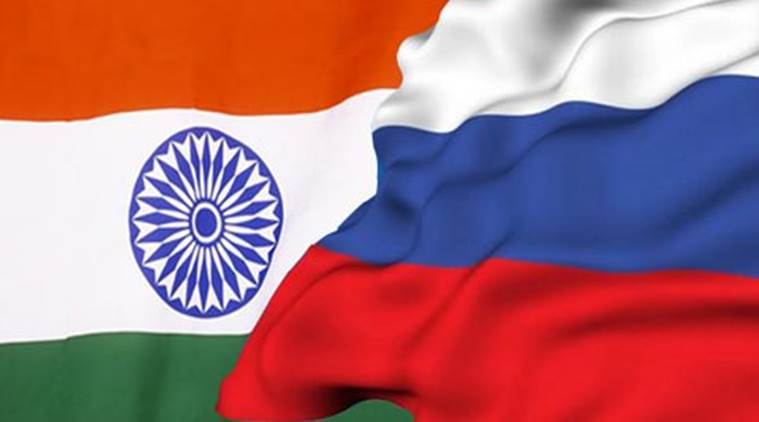Dipanjan Roy Chaudhury
India and Russia must innovate solutions across sectors including revival of soft-power quotient and collaboration in innovative technology and connectivity projects in keeping with the current mutual requirements and geo-politics to bring momentum in strategic partnership.
This was the focus of a two-day (Sep 13-14) high-powered workshop organised to give further impetus to the special priviledged strategic partnership ahead of the annual summit here early October.
The workshop brought together Oil & Natural Gas Minister Dharmendra Pradhan, PM’s scientific adviser Prof K Vijay Raghavan, Chairman Economic Advisory Council of PM Dr Bibek Debroy, Dr Swapan Dasgupta MP, Dr Sudir Mishra DG BrahMos Missile Porgram, Ambassador Gleb Ivashentsov, Dr Shakti Sinha, Director Nehru Memorial Museum Library (NMML), Dr Anirban Ganguly, Director Shyama Prasad Mukherjee Research Foundation (SPMRF) and Vijay Chauthaiwale, Chairman of BJP Foreign cell, Ambassador Asoke Mukherji and Anatoly Kargapolov, Deputy Chief of Mission, Russian Embassy among others. SPMRF co-hosted workshop with the Russian International Affairs Council.
Dr Sinha suggested on creating connectivity corridors to restore and expand relations, including payment in national currencies which was prevalent in the past. Ambassador Ivashentsov focussed on Russia-India-China interaction in mutually acceptable areas for concerted action. These areas include reform of international financial institutions, energy regime in Eurasia, climate change issues, countering double standards on human rights issues, countering interference in internal affairs including taking protectionist measures, cyber security, peaceful uses of nuclear energy.
He felt that EU has inherent interest in Larger Eurasia, drawn by energy links with Russia, and trade links with China and India.
Dr Debroy suggested exploiting soft power drivers of bilateral relations between India and Russia and use of Indian students in Russia as an integral part of discourse on new thrust to bilateral relations.
BrahMos jointly produced by India and Russia have been accepted as the best in its category. Dr Mishra suggested on replication of BrahMos Business Model ($300 million investment, $10 billion returns). It is also a well-known fact Russia is the only foreign partner that is nuclear power plant as on date. Andrey Shevlyakov, CEO Rosatom South Asia suggested use nuclear power reactor technology for border management security
Dr Uttam Sinha, Senior Fellow NMML, laid out suggestions for Indo-Russian partnership in Artic circle. He referred to pursuit of law-based staking of claims under UNCLOS, using example set by Russia. Prof Raghavan on his part suggested creating Major Mission project for Deep Ocean Human Occupied Submersible He also suggested focussing on job creation through Science and Technology cooperation with Russia, especially skilling in cyber technologies.
Ambassador Mukerji, India’s former permanent representative in UN and an old Russia hand laid down a roadmap for India-Russia cooperation in Russian Far East — modernization and utilization of Chennai port and Chennai-Vladivostok maritime route through South China Sea/Straits of Malacca; building on creation of business link in sourcing raw materials by India from Russia for diamonds to extend to other minerals; identification of agricultural cooperation as a priority with Russian land and Indian agricultural farmers; Indian small and medium enterprise participation in the 16 projects submitted by Russian Far East to AIIB.
He also called for India-Russia cooperation in western Indo-Pacific: launch structured Dialogue to discuss cooperation in maritime security, countering terrorism from Af-Pak region directed at India and Russia as well as new terrorist movements in western Indo-Pacific littoral countries; maritime/land connectivity projects like North-South Corridor and Chahbahar connectivity links; Blue Economy cooperation in sustainable fisheries and tourism; laying of a Digital Fibre-optic Link between India and Russia through western Indo-Pacific region.
Dr Yuri Kofner, research scholar from Russia, emphasised on Need for public diplomacy and image building in India to modernize Brand India in Larger Eurasia, including to counter the BRI Chinese public diplomacy. He suggested De-dollarization to counter the hold of Bretton Woods Institutions/US dollar.
While Dr Dasgupta noted that new form of political dialogue is needed between new India and new post-Soviet Russia, Dr Chauthaiwale suggested proactive use of Indian diaspora in Russia on issues to be integrated into bilateral relations.
Addressing Valedictory Session at the workshop, India’s former envoy to Russia and foreign secretary, Kanwal Sibal suggested that Russia should aim for first mover advantage to participate in Make in India initiative to counter pressures on its existing defence diplomacy with India. He also felt that hydrocarbon cooperation should be consciously made into durable pillar for strategic partnership and that Russia should engage with India’s policy of Local Content promotion in the second stage of the Kudankulam nuclear power project. Russia’s space capabilities should be more prominently used in India’s ambitious manned spaceflight programme, Sibal further suggested.
(The views expressed are the author's own and do not necessarily reflect the position of the organisation)

